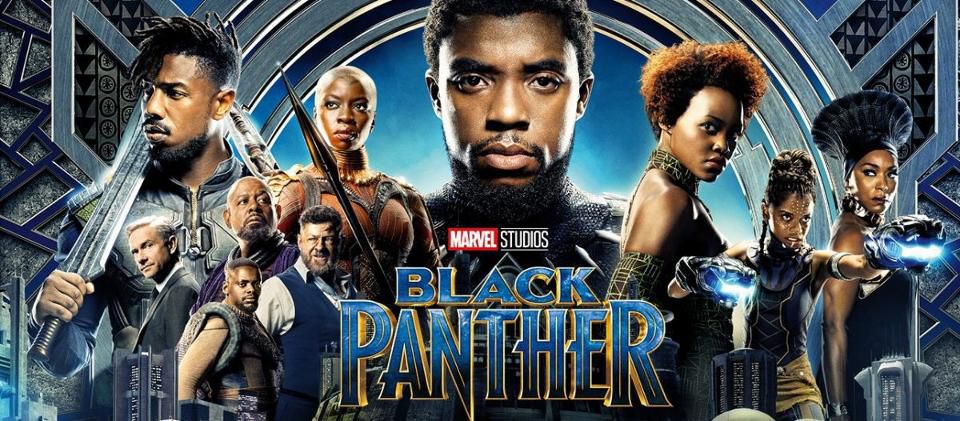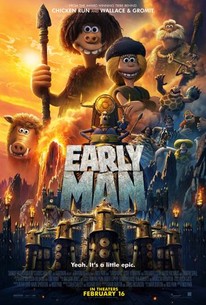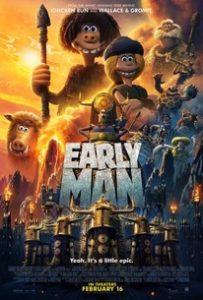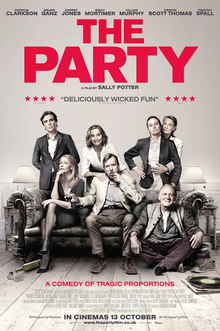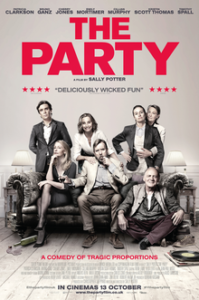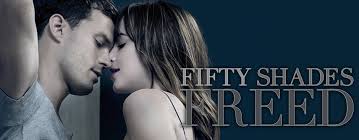Black Panther
Posted on February 15, 2018 at 6:38 pm
A-| Lowest Recommended Age: | Middle School |
| MPAA Rating: | Rated PG-13 for prolonged sequences of action violence, and a brief rude gesture |
| Profanity: | Some strong language |
| Alcohol/ Drugs: | None |
| Violence/ Scariness: | Extended comic book-style peril and violence, guns, fistfights, chases, explosions, characters injured and killed |
| Diversity Issues: | A theme of the movie |
| Date Released to Theaters: | February 16, 2018 |
| Date Released to DVD: | May 14, 2018 |
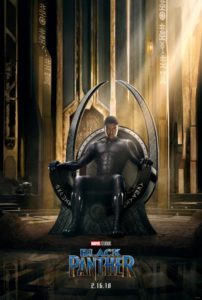
Wakanda forever! And all hail writer/director Ryan Coogler, the Black Panther, the Dora Milaje, and everyone who helped to bring this next-level, majestic, and wildly entertaining superhero movie to life.
Quick primer for those unfamiliar with the Marvel Universe: Black Panther, the first major black comic book superhero, lives in a self-sufficient, almost completely hidden African country called Wakanda. An American CIA field agent describes it as a poor, undeveloped country: “textiles, shepherds, cool outfits.” That is how they want to be seen by the world. In reality, thanks to a meteor that landed there in prehistoric times, they are the world’s only source of a metal called vibranium, which is extremely powerful, and which has been the basis for the world’s most advanced technology. Because Wakanda is cut off from the rest of the continent by mountains and rainforests, they have never been colonized and had very little interaction with the rest of the world. When they did, it did not go well. King T’Chaka spoke to the UN in “Captain America: Civil War,” and was assassinated. After a brief scene set in the past, we begin the story when his son T’Challa (Chadwick Boseman) is about to take over as king.
Much of the film takes place in Wakanda, gloriously imagined by production designer Hannah Beachler and costume designer Ruth Carter, reflecting extensive research into African design. It is worth seeing the film a second time just to revel in the wonderfully vibrant shapes and colors, and in the African landscape.

Wakanda’s all-female military is called the Dora Milaje, led by General Okoye (Danai Gurira). She advises T’Challa about a mission outside of Wakanda, where he is going to rescue his one-time girlfriend, Nakia (Lupita Nyong’o), a spy who has gone undercover and has been captured by warlords. “Don’t freeze,” Okoye tells T’Challa. “I never freeze,” he replies. But he does. That’s the effect Nakia has on him. At first, she is angry that he interrupted her mission. But then he tells her that he wants her there when he becomes king, and she is glad to agree.
When they return, we see him honor his mother (Angela Bassett, regal and steadfast) and get teased by his sister, the tech whiz Shuri (Letitia Wright). She is this movie’s version of James Bond’s Q, except that she does not just provide the cool gadgets; she invents them. Her motto seems to be what she tells her brother: “Just because something works does not mean it can’t be improved.” That comment, made as a gentle taunt to a brother who is not as comfortable with change as she is, is just one example of the way that this film is able to raise profound issues in a way that resonates but is never heavy-handed or distracting. And the way T’Challa responds to being teased like the admonition not to freeze, helps to humanize the brilliant, brave, handsome, wealthy, powerful superhero.
T’Challa wants to continue to keep Wakanda away from the troubles of the rest of the world. Nakia tells him that they are obligated to share what they have to help protect others. She says, “I can’t be happy here knowing there are people out there who have nothing.” Of course, they are both right, and this conflict is reflected throughout the film in a way that is remarkably nuanced and thoughtful, not just for a superhero movie but in any context.
As I have often said, superhero movies depend more on the villain than the hero, and this one has one of the all-time greats. Michael B. Jordan, who starred in Coogler’s two previous films, “Fruitvale Station” and “Creed,” is nothing less than mesmerizing here, playing a man who represents the “other” to T’Challa, but who is connected to him as well. The film touches lightly but with insight on the difference between being an African, raised in a country where everyone is black and unqualifiedly patriotic, if insular, and being an African-American, deeply conflicted about the relationship with “home,” but better able to understand the plight of others. It touches on other vital contemporary issues like refugees and radicalization and it is all completely organic to the story.
And it is a full-on superhero movie, with a wild chase through an Asian city some very cool stunts, and a huge climactic fight scene involving a massive battle and at least two different modes of transportation, not including the battle rhinos. Yes, I said battle rhinos. I know, right?
The supporting cast includes an outstanding Daniel Kaluuya (“Get Out”), a rare on-screen appearance by motion-capture master Andy Serkis with his Tolkien co-star Martin Freeman as a CIA agent, Forest Whitaker as a priest, Winston Duke as the leader of on of Wakanda’s five tribes, and “This is Us” star Sterling K. Brown as a guy you’re better off not knowing too much about until you see the movie, which I hope you do, more than once. You’ll want to be a part of Wakanda, too.
Parents should know that this film includes extensive comic book-style action violence with many characters injured and killed, guns, spears, hand-to-hand combat, chases, explosions, and some strong language.
Family discussion: If T’Challa and Erik had grown up in each other’s environments, how would they be different? How should Wakanda resolve the conflict between tradition and innovation? Is it true that it is hard for a good man to be a good king? Why?
If you like this, try: the Black Panther comics and the Avengers movies

